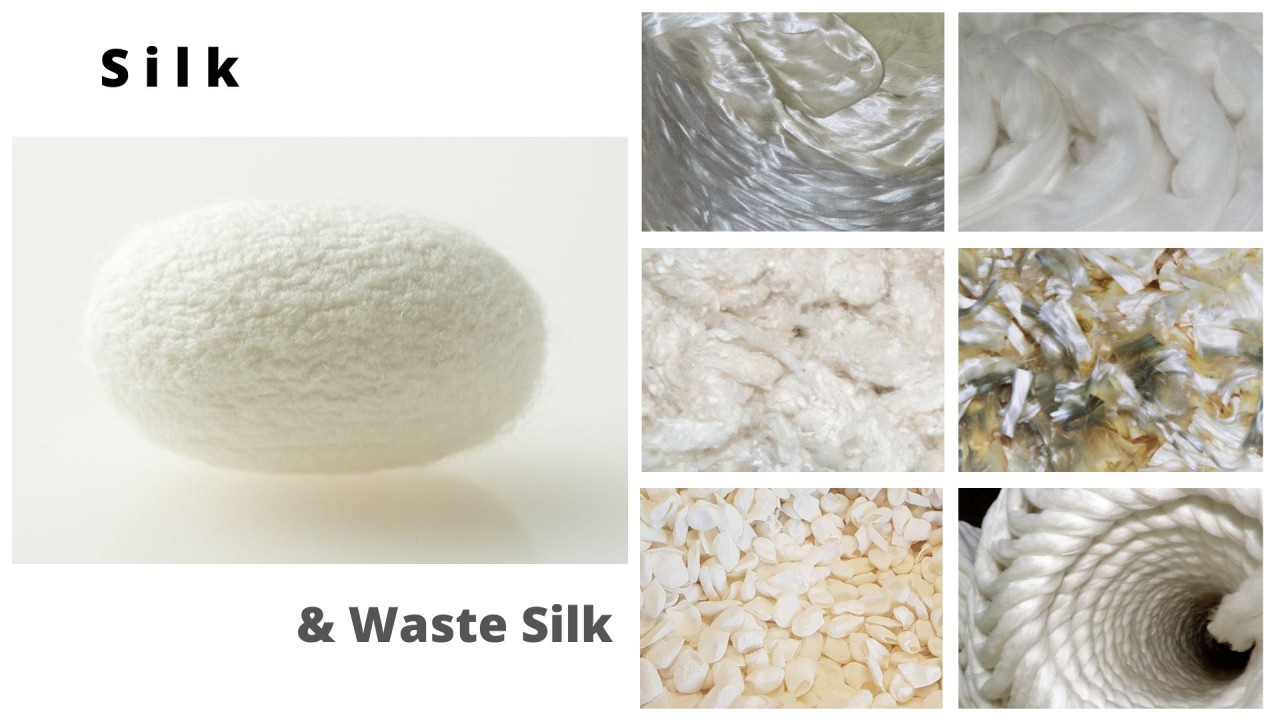
What are waste SILK fibres?
What is considered silk (continuous fibre )
For silk brands, we usually consider the silk filament (or yarn), the yarn that is obtained through appropriate reeling mills processes (manual or mechanical unwinding of the silk cocoon). Once the initial part of the yarns has been identified, it would theoretically be possible to unwind a continuous thread in natural silk for a total length of between 700 and 1500 meters
What is silk waste (discontinuous fibre)
Textile waste (cascame in Italian, dechet in French, Adfall in German, borras in Spanish) is the denomination used for a set of residues that accumulate, as they "fall off", during the main processes to which the various silk raw materials are subjected. By extension, all those residues which, having a lower value than the original material, are generally abandoned or set aside, are defined with the same name.
Within the silk fiber sector, the term silk waste, or discontinuous fiber, or Shappe Silk, is intended to define all those virgin silk fibers which are not suitable, in this case for production technology reasons alone, to be processed within the spinning mill system to obtain a continuous silk yarn, and from all those silk materials obtained as residues of subsequent processing.
Silk waste deriving from the reeling mill or similar activity
Cocoons not suited for reeling
- Some cocoons are not suitable for use in the production of continuous silk thread as they are not complete, do not meet quality standards, and are crushed or damaged. These include cocoons in which moths made a hole once the transformation of the caterpillar into a moth has been accomplished. The opening in the upper part of the cocoon prevents it from being used for the production of the continuous filament. This is an important raw material for cruelty-free production line;
Primary waste of silk
- Silk materials deriving from all operations preliminary to reeling, i.e. for example deriving from a superficial brushing of the cocoon carried out to facilitate the search for the single thread end in order to start reeling. Collected manually or mechanically from baths where one of the constituent proteins of Silk, sericin, is semi-dissolved, once dried they appear in the form of "little rods" of fibers that are somewhat stiff in the hand
Fine reeling fibers
- Once it is no longer possible to obtain continuous silk thread, there is still the whole of residuals that were left out. For the most part, it consists of cocoons that did not unwind completely and contain parts of the chrysalis that will be separated by subsequent processing.
Oblong and Wadding
- Fibers and semi-products created in the process of the cocoons’ opening
Waste silk fiber is derived during various processes: carding, combing, spinning twisting, and weaving.
Silk Waste… not Recycle – Re#Value
It is a lot of time that waste in the silk field is considered more than a problem, an opportunity. Silk waste materials are the raw material for a successful production market of silk and silk blend yarns but not only...more and more opportunities are going to be opened in alternative use and alternative markets over the textiles field
It is possible to state that the silk production system is a 0% waste system Everything from mulberry tree plants, cocoons, chrysalid, fibre, yarn waste, and fabrics waste are reusable, not recycle...new use to value the oldest fibre of the future